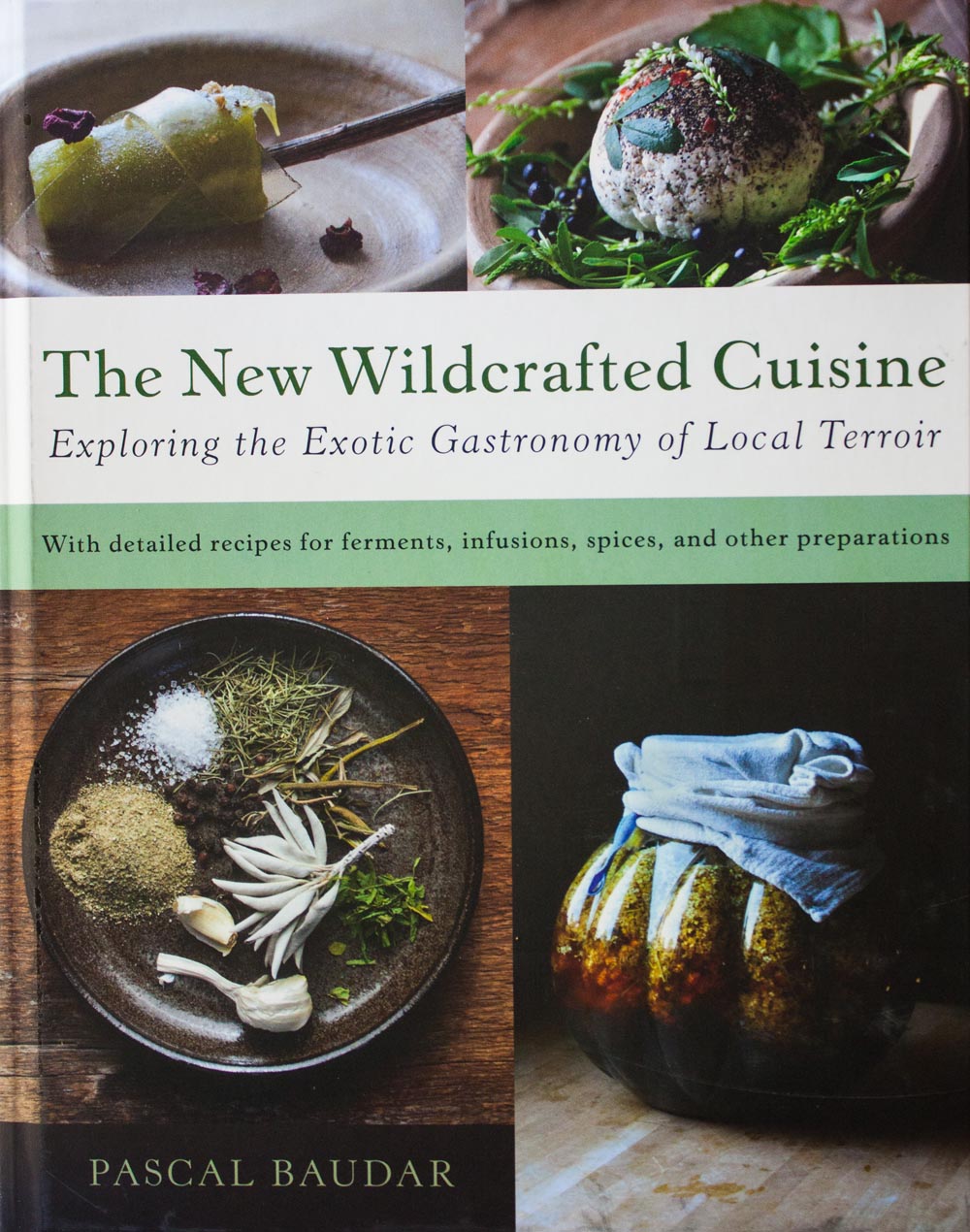
“The New Wildcrafted Cuisine” is a fascinating book about local ingredients. Pascal Baudar is obviously passionate about foraging ingredients and creating truly local cuisines.
The basics about “The New Wildcrafted Cuisine”
“The New Wildcrafted Cuisine” was written by Pascal Baudar. Baudar also did most of the photography for the book. The book was published by Chelsea Green Publishing of White River Junction, VT in 2016. The ISBN is 9781603586061. There are 423 pages, including a comprehensive index, printed on partially recycled and chlorine-free paper.
Pascal Baudar is an experienced wild food forager. He teaches classes on the subject. He also supplies local restaurants with ingredients from his foraging expeditions or prepared from those ingredients in his own kitchen. Baudar lives in Los Angeles, CA and forages the surrounding countryside with occasional trips farther afield.
What is “The New Wildcrafted Cuisine” about?
This is a book about creating truly local cuisines. Not just local styles of cooking with ordinary ingredients, but food using wild ingredients only available in specific regions. Baudar advocates for regional cuisines that cannot be duplicated in other parts of the country.
I like this concept as a local food advocate myself. Don’t just use food grown on local farms. Use food growing in the wild that only grows locally. “The New Wildcrafted Cuisine” gives a pretty loose definitions of food, too. If it is not poisonous, Pascal Baudar will probably try to work it into a dish or a drink.
This book is all about adjusting our parameters concerning “food” and “local.” It is about having an adventurous palette and a willingness to try new things and new combinations. Baudar constantly asks “Can I make something delicious using this ingredient?” even when it is a dead stick or a bit of dirt.
The book explores the “why” of wild foraging more than the “what” or the “how.” It is not a book to identify edible plants or mushrooms in the field. This is not a step-by-step guide to foraging technique. It does not give lists of necessary equipment. It is a book intended to open the mind to new culinary possibilities.
Who should read “The New Wildcrafted Cuisine?
“The New Wildcrafted Cuisine” will have a fairly wide curiosity field among foodies, chefs and naturalists. Many people will buy the book just to see what kind of meal can be made with tree bark or unripe wild berries. But this is not the true audience for the book.
Baudar is really speaking to culinary boundary pushers. His book is for those willing to step outside the traditional kitchen, set aside the usual rules about food and create something new. And he wants us to do it using the wild ingredients found all around us.
More than anything, this book is a mind-opener. Whether you are inclined to go foraging for wild ingredients or not, “The New Wildcrafted Cuisine” will change the way you think about food and use ingredients in the kitchen. It will leave every reader with broadened culinary horizons. Which is the whole point!
This book very much fits into the sphere of whole food health. It is the epitome of local food sourcing. I highly recommend giving it a read.
